
Journal of Advanced Joining Processes
Scope & Guideline
Advancing the Frontier of Joining Technologies
Introduction
Aims and Scopes
- Joining Processes:
The journal covers a wide range of joining processes, including but not limited to welding, adhesive bonding, and mechanical fastening techniques. It emphasizes both traditional and innovative methods, providing insights into their mechanics, applications, and improvements. - Material Characterization:
A significant focus is placed on the characterization of materials involved in joining processes. This includes the study of microstructural changes, mechanical properties, and failure mechanisms of materials post-joining. - Optimization and Modeling:
The journal promotes research on optimization techniques and modeling approaches to enhance joining processes. This includes finite element analysis, machine learning applications, and statistical methods for process improvement. - Dissimilar Material Joining:
There is a growing emphasis on the joining of dissimilar materials, addressing challenges and innovations in creating strong, reliable joints between different material types, such as metals and polymers. - Sustainability and Environmental Impact:
Research addressing the sustainability of joining processes, including the use of renewable materials, energy-efficient techniques, and the environmental impact of various joining methods, is increasingly highlighted.
Trending and Emerging
- Advanced Joining Technologies:
There is a significant increase in research focusing on advanced joining technologies such as laser welding, friction stir welding, and additive manufacturing processes. This trend reflects the industry's shift towards high-precision, efficient methods that can handle complex geometries and materials. - Machine Learning and AI in Joining Processes:
The integration of machine learning and artificial intelligence techniques into the analysis and optimization of joining processes is gaining traction. This trend indicates a move towards data-driven approaches that enhance process control and predict joint performance. - Interfacial Mechanics and Material Behavior:
Emerging studies are increasingly focusing on the interfacial mechanics and material behavior of joints, particularly in dissimilar material combinations. Understanding the interface's role in joint performance is critical for developing reliable joints in advanced applications. - Sustainable Joining Practices:
Research on sustainable joining practices, including the use of bio-based adhesives and energy-efficient welding processes, is on the rise. This trend aligns with global sustainability goals and the industry's need to reduce environmental impact. - Functionalized and Smart Joints:
The development of functionalized and smart joints that can respond to environmental changes or load conditions is becoming a prominent theme. This reflects a growing interest in creating intelligent materials and structures that enhance performance and reliability.
Declining or Waning
- Traditional Welding Techniques:
There has been a noticeable decline in publications focusing solely on traditional welding techniques, such as arc welding, as researchers shift towards exploring advanced methods and hybrid processes that integrate multiple technologies. - Basic Mechanical Testing of Joints:
Research dedicated to standard mechanical testing of welded joints, such as simple tensile tests without advanced analysis, appears to be decreasing as the field moves towards more comprehensive studies that include fatigue, corrosion, and long-term performance evaluations. - Conventional Adhesive Bonding:
The exploration of conventional adhesive bonding methods is waning in favor of studies that investigate novel adhesives, hybrid bonding techniques, and the integration of adhesives with other joining methods for enhanced performance. - General Reviews without Novel Insights:
General review articles that do not provide novel insights or advancements in joining processes are becoming less prevalent, as the journal encourages more original research that contributes significantly to the field.
Similar Journals
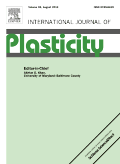
INTERNATIONAL JOURNAL OF PLASTICITY
Unveiling the Dynamics of Plastic MaterialsINTERNATIONAL JOURNAL OF PLASTICITY, published by Pergamon-Elsevier Science Ltd, stands as a pivotal forum in the field of materials science and engineering, exploring the nuances of plastic behavior in materials. With its ISSN 0749-6419 and E-ISSN 1879-2154, this esteemed journal has been a cornerstone of academic research since its inception in 1985, continuing to hold significant relevance as it converges towards 2024. Ranking in the Q1 quartile across multiple categories, including Materials Science (Miscellaneous), Mechanical Engineering, and Mechanics of Materials, it is recognized for its high impact, evidenced by its competitive Scopus rankings that place it in the 97th percentile among mechanical engineering journals. Although it does not offer open access, the journal remains committed to disseminating cutting-edge research findings that advance understanding in plasticity, providing researchers, professionals, and students with vital insights into contemporary issues and innovations in the field.
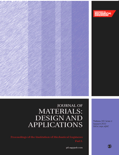
PROCEEDINGS OF THE INSTITUTION OF MECHANICAL ENGINEERS PART L-JOURNAL OF MATERIALS-DESIGN AND APPLICATIONS
Elevating Standards in Mechanical Engineering ResearchPROCEEDINGS OF THE INSTITUTION OF MECHANICAL ENGINEERS PART L-JOURNAL OF MATERIALS-DESIGN AND APPLICATIONS is a prestigious academic journal published by SAGE PUBLICATIONS LTD, focusing on the dynamic fields of mechanical engineering and materials science. With an impressive impact factor reflective of its rigorous scholarly contributions, this journal serves as a vital platform for the dissemination of innovative research and practical applications in materials design and engineering processes. Since its inception in 1999 and continuing through 2024, it has maintained a robust reputation, achieving a Q2 ranking in both Materials Science (miscellaneous) and Mechanical Engineering categories, as well as commendable Scopus ranks that place it in the top percentiles of its fields. Located in the United Kingdom, the journal encourages submissions from researchers and professionals who are seeking to advance their understanding of materials applications while fostering interdisciplinary collaboration. Although it currently operates under traditional access terms, the journal prioritizes impactful research that addresses contemporary challenges in design and manufacturing, ensuring that it remains a must-read for anyone invested in the innovations shaping our technological landscape.
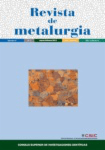
REVISTA DE METALURGIA
Connecting researchers to the latest in metal and alloy studies.REVISTA DE METALURGIA, published by the CONSEJO SUPERIOR INVESTIGACIONES CIENTIFICAS-CSIC in Spain, stands as a significant open-access journal since 1995 that focuses on the fields of condensed matter physics, materials chemistry, and the study of metals and alloys. With an ISSN of 0034-8570 and an E-ISSN of 1988-4222, this journal aims to disseminate innovative research findings and reviews that contribute to the understanding and advancement of metallurgical science. Although currently ranked in the fourth quartile across several relevant categories in Scopus, including Materials Science and Physics, its commitment to open access promotes the wider distribution of knowledge in these fields, ensuring that emerging findings are accessible to researchers, industry professionals, and students alike. The journal covers research from its earliest issues in 1968, maintaining a continuous archive that enhances its contributions to the scientific community. For those passionate about the complexities of material properties and behaviors, REVISTA DE METALURGIA serves as a platform for impactful scholarship and collaborative advancement.
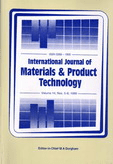
INTERNATIONAL JOURNAL OF MATERIALS & PRODUCT TECHNOLOGY
Shaping the Future of Engineering Through Scholarly Discourse.International Journal of Materials & Product Technology, published by InderScience Enterprises Ltd, is a pivotal platform for scholarly work in the fields of industrial and manufacturing engineering, mechanical engineering, mechanisms of materials, and safety, risk, reliability, and quality. With a rich history spanning from 1986 to 2024, this journal addresses critical advancements and challenges in materials technology, catering to a diverse audience including researchers, industry professionals, and students striving for innovation. Although currently not an open-access journal, it serves as a crucial resource for high-quality, peer-reviewed research, contributing significantly to its ranked quartile positioning in key engineering categories as of 2023. Positioned in the United Kingdom, the journal fosters global discourse and provides essential insights that spur academic debate and practical applications in these rapidly evolving fields. Explore this journal to stay updated with actionable research that shapes the future of materials and product technology.
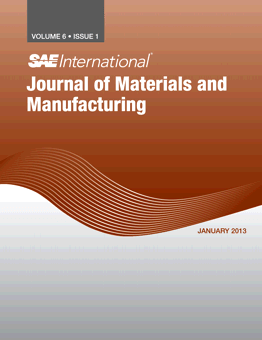
SAE International Journal of Materials and Manufacturing
Pioneering Discoveries in Materials and Manufacturing TechniquesSAE International Journal of Materials and Manufacturing, published by SAE International, is a leading peer-reviewed journal that focuses on the advancements and research in the fields of materials science and manufacturing engineering. With ISSN 1946-3979 and E-ISSN 1946-3987, this journal is an essential resource for researchers, professionals, and students who are keen on exploring innovative materials and modern manufacturing techniques. Although the journal currently does not offer open access options, its rigorous selection process ensures the publication of high-quality papers that contribute significantly to the knowledge base in the industry. Recognized within the third and fourth quartiles across various engineering categories, including Industrial and Manufacturing Engineering and Mechanical Engineering, the journal provides an impactful platform for disseminating groundbreaking research. With a converged history since 2002 and a comprehensive approach to critical topics in mechanics of materials, it empowers the academic community with vital insights, trends, and methodologies that propel the future of manufacturing excellence.
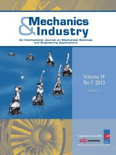
Mechanics & Industry
Unleashing Potential in Industrial ResearchMechanics & Industry, published by EDP SCIENCES S A, is a prominent open access journal dedicated to the fields of Industrial and Manufacturing Engineering, Materials Science, and Mechanical Engineering. Since its establishment in 2004, the journal has served as a crucial platform for disseminating innovative research and developments in mechanics, catering to a diverse audience of researchers, professionals, and students worldwide. With an ISSN of 2257-7777 and an E-ISSN of 2257-7750, the journal is indexed in Scopus and has achieved a respectable Q3 quartile ranking across its categories for 2023. Mechanics & Industry emphasizes the importance of collaborative research and the sharing of knowledge, underpinning advancements in technology and industry practices. The journal's commitment to open access ensures that research findings are available to all, promoting sustainability and innovation within the global engineering community. Located in Les Ulis, France, this journal continues to uphold high standards of scholarly excellence and relevance in an ever-evolving industrial landscape.

Machines
Pioneering advancements in mechanical and electrical engineering.Machines is a leading journal in the fields of engineering and computer science, published by MDPI in Switzerland since 2013. As an Open Access publication, it ensures that researchers, professionals, and students can freely access high-quality peer-reviewed research. The journal covers a diverse range of topics, including control and optimization, mechanical engineering, electrical engineering, and industrial manufacturing, boasting impressive rankings in various Scopus categories, such as Q2 in Computer Science and Control Systems Engineering. With a commitment to advancing knowledge and innovation in these critical areas, Machines serves as an essential platform for disseminating research findings and fostering collaboration within the academic community. By contributing to the ongoing dialogue in these dynamic fields, the journal plays a pivotal role in shaping the future of technology and engineering practices.
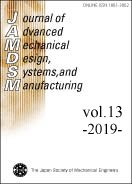
Journal of Advanced Mechanical Design Systems and Manufacturing
Advancing Knowledge through Open Access Research.The Journal of Advanced Mechanical Design Systems and Manufacturing, published by the Japan Society of Mechanical Engineers, is a pivotal scholarly platform dedicated to advancing knowledge in the fields of Industrial and Manufacturing Engineering and Mechanical Engineering. As an Open Access journal since 2021, it provides unrestricted access to high-quality research, facilitating broader dissemination and collaboration among researchers, professionals, and students globally. The journal's emphasis on innovative methodologies and cutting-edge technologies contributes significantly to the evolving landscape of engineering practices, with its research scope encompassing the latest advancements and applications in mechanical design and manufacturing systems. With a current impact factor that positions it in the Q3 quartile of both the Industrial and Manufacturing Engineering and Mechanical Engineering categories, along with its Scopus rankings further indicating its relevance in the field, this journal is an essential resource for those seeking to push the boundaries of mechanical engineering knowledge. For further inquiries or submissions, please reach the journal at its headquarters located at KDX Iidabashi Square Bldg, 2nd Floor, 4-1 Shin-ogawamachi, Shinjuku-ku, Tokyo, Japan.
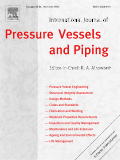
INTERNATIONAL JOURNAL OF PRESSURE VESSELS AND PIPING
Empowering professionals with authoritative engineering research.International Journal of Pressure Vessels and Piping, published by Elsevier Science Ltd, stands as a premier platform in the fields of Materials Science, Mechanical Engineering, and Mechanics of Materials. With a rich history spanning from 1973 to 2024, this journal has consistently ranked in the Q2 category of its respective fields, affirming its relevance and contribution to ongoing research and innovation. As evidenced by its solid positioning in Scopus rankings, including a notable 74th percentile rank in Mechanical Engineering, it is a valued resource for professionals, researchers, and students seeking to expand their knowledge on topics related to pressure vessels and piping systems. While the journal does not currently offer Open Access, its comprehensive articles and peer-reviewed research continue to make a significant impact, ensuring that readers stay informed of the latest advancements and methodologies in the industry. Available in both print and online formats, the International Journal of Pressure Vessels and Piping is your go-to source for authoritative insights and cutting-edge studies in the engineering domain.
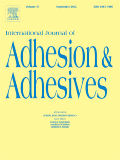
INTERNATIONAL JOURNAL OF ADHESION AND ADHESIVES
Pioneering Research in Adhesive Technologies.INTERNATIONAL JOURNAL OF ADHESION AND ADHESIVES, published by Elsevier Science Ltd, serves as a premier platform for the dissemination of cutting-edge research findings in the field of adhesion and adhesive technologies. Since its inception in 1980, the journal has consistently ranked highly, reflecting its critical role in advancing knowledge across multiple disciplines, including Biomaterials, Chemical Engineering, and Polymers and Plastics. With its impressive positioning as Q1 in Chemical Engineering and Polymers and Q2 in Biomaterials, it operates within the top echelons of its categories, underscoring its importance to academics and industry professionals alike. The journal also boasts significant Scopus rankings, placing it in the top 75th percentile for Chemical Engineering and in the top 74th percentile for Materials Science. Although it does not offer open access, the journal remains accessible to a wide audience through various institutional subscriptions. The scope of the INTERNATIONAL JOURNAL OF ADHESION AND ADHESIVES includes exploring the fundamental principles and applications of adhesion science, materials interactions, and innovative adhesive formulations, making it an invaluable resource for researchers, professionals, and students dedicated to enhancing material performance and engineering solutions.